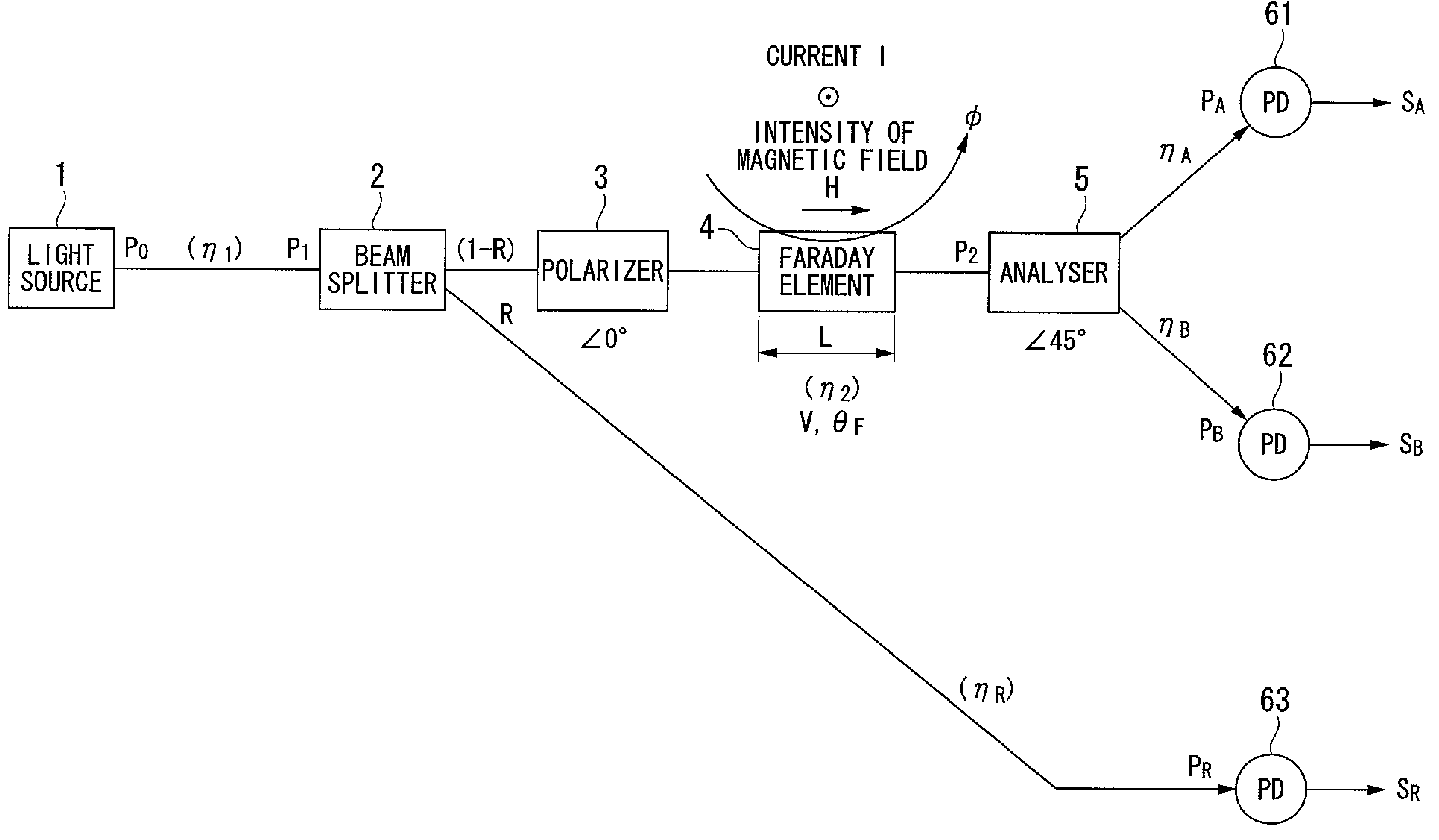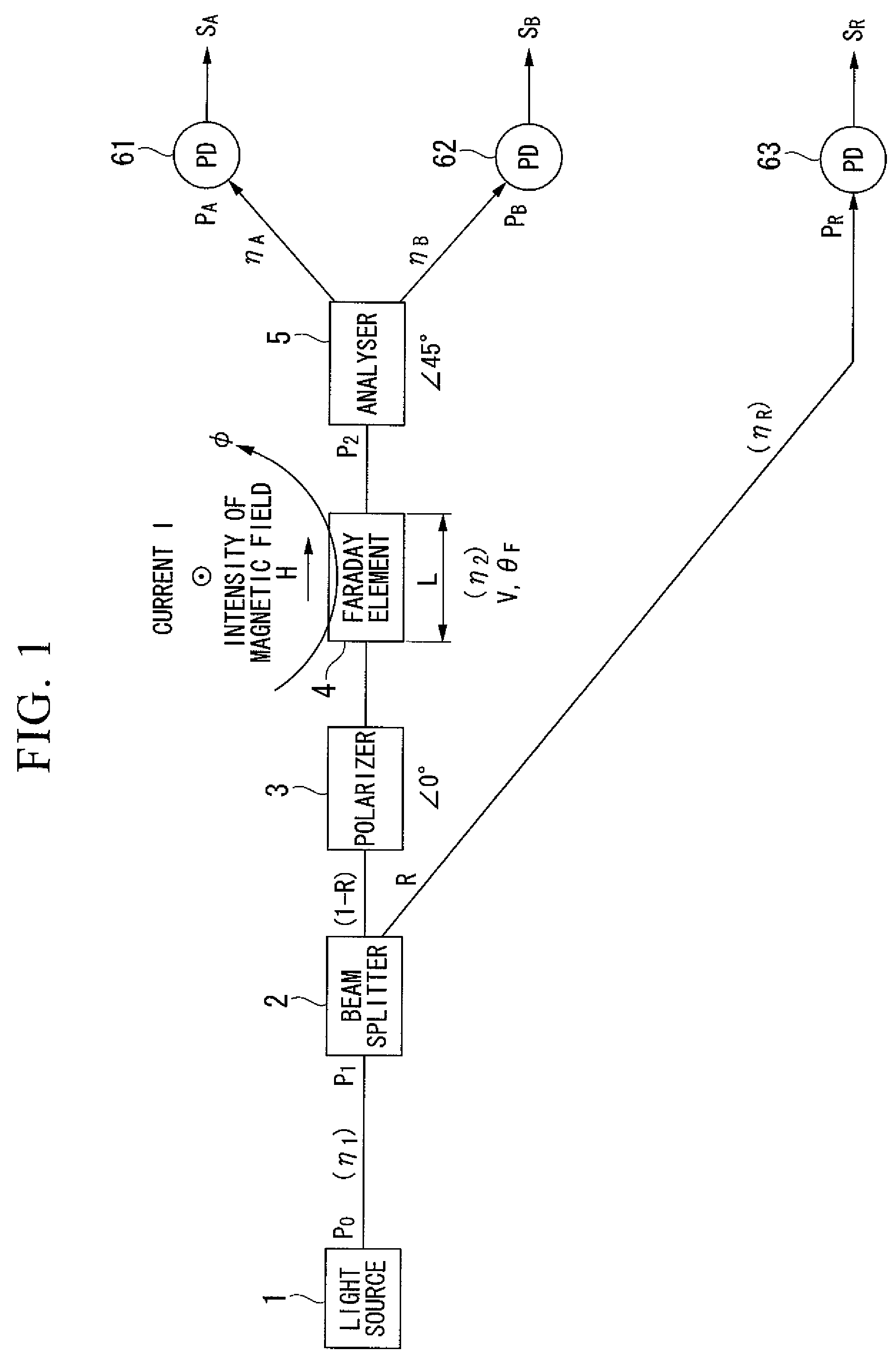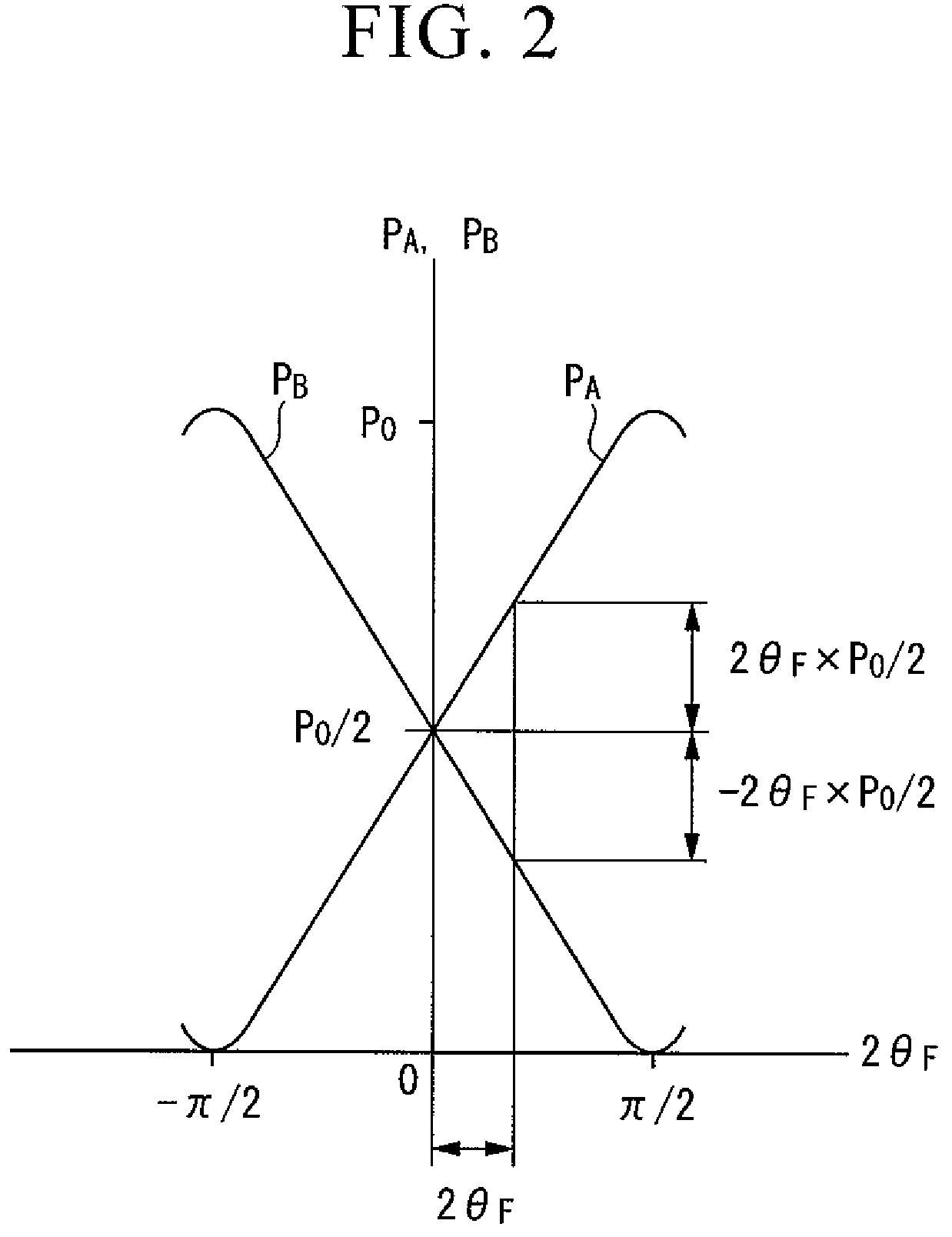Optical sensor, optical current sensor and optical voltage sensor
a voltage sensor and current sensor technology, applied in the field of optical sensors, can solve the problems of difficult to improve the response speed, the modulation power increases, and the inability to apply the modulation degree calculation method to a dc, and achieve the effects of short rise time, simple constitution and high response speed
- Summary
- Abstract
- Description
- Claims
- Application Information
AI Technical Summary
Benefits of technology
Problems solved by technology
Method used
Image
Examples
Embodiment Construction
[0029]FIG. 1 is a drawing which shows a principle constitution of the present invention.
[0030]In FIG. 1, 1 is a light source, 2 is a beam splitter, 3 is a light polarizer, 4 is a Faraday cell, 5 is an analyser, and 61-63 are light receiving elements such as photodiodes (PD).
[0031]Now, a separation ratio of the beam splitter 2 is R, a transmission efficiency regarding a quantity of light is η, a length of the Faraday cell 4 is L, a Faraday rotation angle is θ, a Verdet constant is V and an intensity of a magnetic field generated by a current I is H. Followings are defined.
|2θF|F=VHL=VI (1)
Quantity of light PA, PB and PR which reach the light receiving elements 61-63 are shown by using the following equations.
PA=η1*η1*ηA*(1−R)(1 / 2)P0(1+2θF) (2)
PB=η1*η2*ηB*(1−R)(1 / 2)P0(1-2θF) (3)
PR=η1*ηR*R*P0 (4)
[0032]In an ideal case, the following equations are applied.
R=0 (5)
η1=η2=ηR=ηA=ηB=1 (6)
[0033]Therefore, the following equations are obtained by applying equations (5) and (6) to equations...
PUM
 Login to View More
Login to View More Abstract
Description
Claims
Application Information
 Login to View More
Login to View More - R&D
- Intellectual Property
- Life Sciences
- Materials
- Tech Scout
- Unparalleled Data Quality
- Higher Quality Content
- 60% Fewer Hallucinations
Browse by: Latest US Patents, China's latest patents, Technical Efficacy Thesaurus, Application Domain, Technology Topic, Popular Technical Reports.
© 2025 PatSnap. All rights reserved.Legal|Privacy policy|Modern Slavery Act Transparency Statement|Sitemap|About US| Contact US: help@patsnap.com



